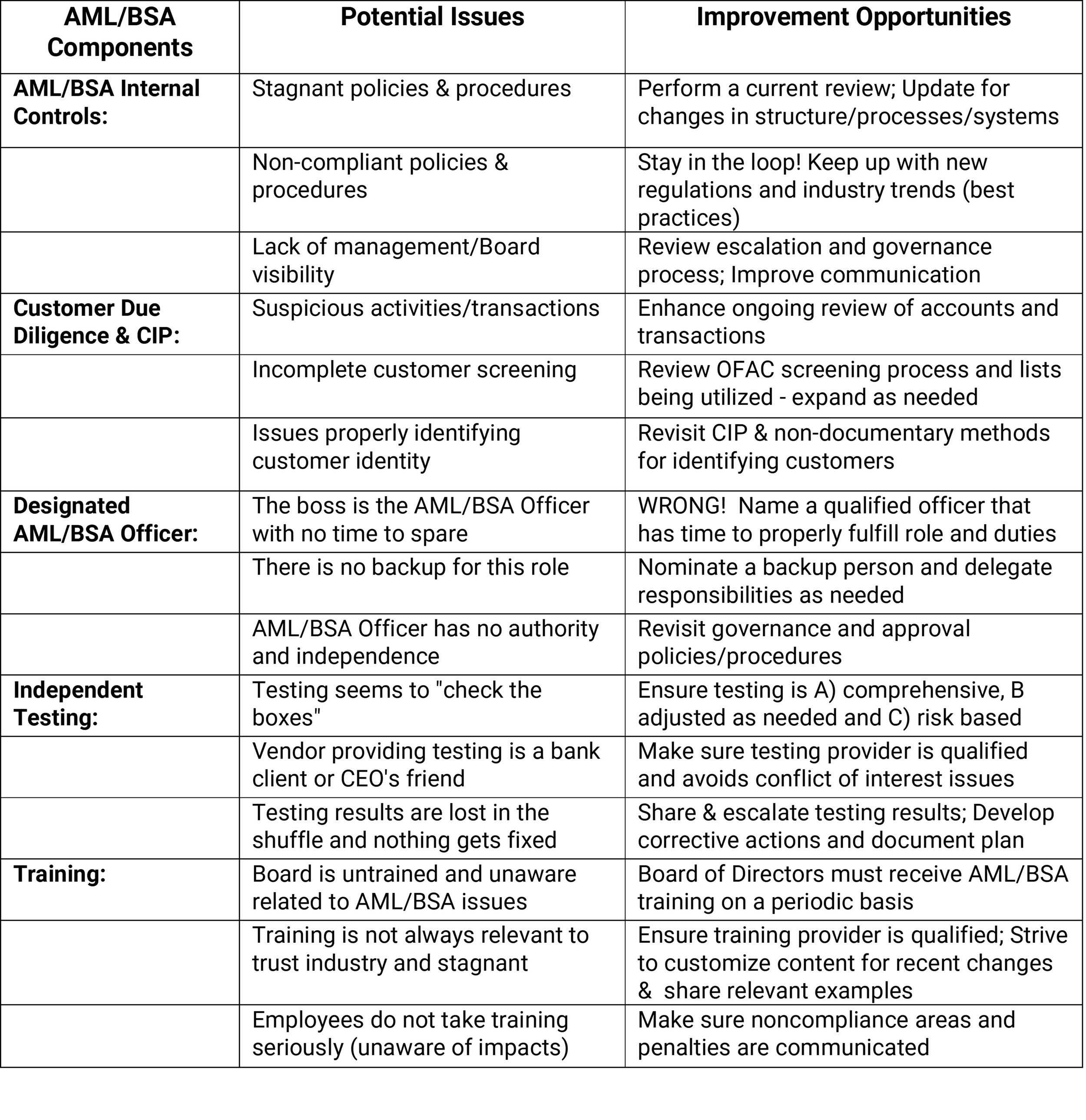Take your AML/BSA Compliance Program from Good to Great!
The Bank Secrecy Act (BSA) was passed in 1970 and for the first time, financial institutions were required to report cash deposits of more than $10,000. Fast forward over 50 years later - several new laws have been enacted and numerous requirements need to be met to combat suspicious activity and money laundering.
Trustee Impacts and Increased Fines for Noncompliance
Corporate Trustees allocate resources, time, and effort to adhere with fiduciary compliance requirements including AML/BSA. The risks are high, and penalties for noncompliance can be steep. In 2024, we have seen both banks and trust organizations levied over $3.2B in fines due to noncompliance. Fiduciary examiners at the national and state levels are requiring more due diligence on the AML/BSA Programs given the rise in uncertainty and continuing threat of terrorism and money laundering activities.
How is your AML/BSA Compliance Program performing?
This article will focus on some of the common issues with AML/BSA Compliance Programs and provide some tips and industry best practices that you can use to improve the effectiveness of your AML/BSA Compliance Program. Below are 3 topics that will be covered in this article:
Fundamentals First – Master the Basics!
In 1961, Vince Lombardi entered the Green Bay Packers locker room and said to the team, “Gentlemen, this is a football”. A famous quote that later led to 3 straight NFL championships during the 1960’s. Vince was a believer that a team needed to master the fundamentals, before focusing on anything else. When it comes to adhering to AML/BSA requirements, you should focus on “mastering the fundamentals” too.
The pillars or requirements of an AML/BSA Compliance Program are:
Internal Controls
Customer Due Diligence & CIP
Designation of an AML/BSA Officer
Independent Testing
Training
BEFORE you add a few bells and whistles to your existing AML/BSA policy and procedures, make sure you are executing on your existing controls FIRST. This simply means “doing what you say you will do”. Often when I review AML/BSA policies for corporate trustees, I observe gaps and noncompliance when I compare existing procedures to approved policies. Why?
Below are common issues and helpful tips to master the fundamentals:
Reviewing and fine tuning your fundamentals is the best place to start and will keep you busy. There are also opportunities to increase the overall level of your AML/BSA due diligence. Recent trends include:
Creating an AML/BSA customer risk rating model (defining higher risk customers)
Developing an enhanced due diligence (EDD) plan for higher risks
Gathering additional information for beneficial owners of entities
Expanding your OFAC screening to include politically exposed persons and adverse media
Engagement is Critical at the TOP
Many trust organizations “talk the talk” but sometimes do not “walk the walk” when it comes to ensuring proper engagement takes place at the Board of Director level. Common gaps related to AML/BSA oversight at the board level include:
o Unawareness of specific fiduciary AML/BSA related issues and lack of visibility
o Inconsistent escalation process for issues, filings, and reporting (not in the loop)
o Poor information flow from committees (weak documentation of issues & results)
o Infrequent and inadequate training
Creating a culture of being attentive to AML/BSA regulations starts at the TOP. Below is a diagram to offer some ideas to enhance your overall engagement.
Taking your AML/BSA Compliance Program from Good to Great!
Now that you have reviewed some common issues and learned some tips and industry best practices, how does your AML/BSA Compliance Program stack up? Any opportunities to improve? Although there is no perfect AML/BSA Compliance Program, there is always an opportunity to strive to be better. See below for a few simple steps to transform your AML/BSA Compliance Program from good to great over time:
Conclusion
That’s it! This process is a journey and takes time, but through prioritization every step in the right direction counts!
If you have any questions or comments, reach out at patrick.alyward@trustworthyconsultants.com






